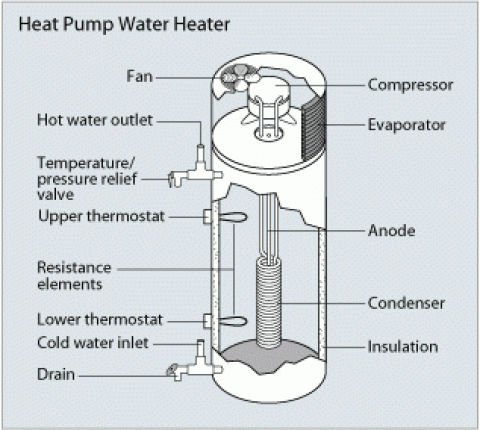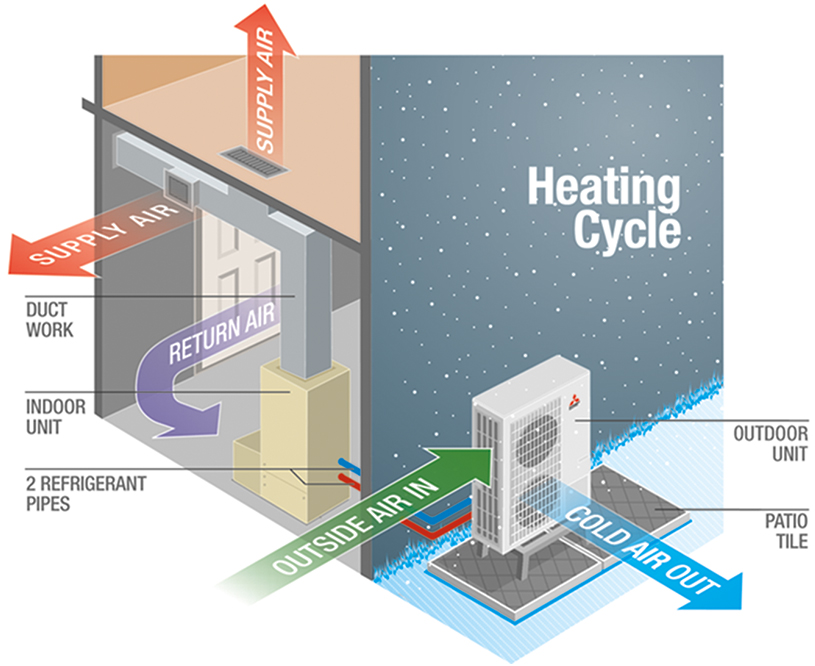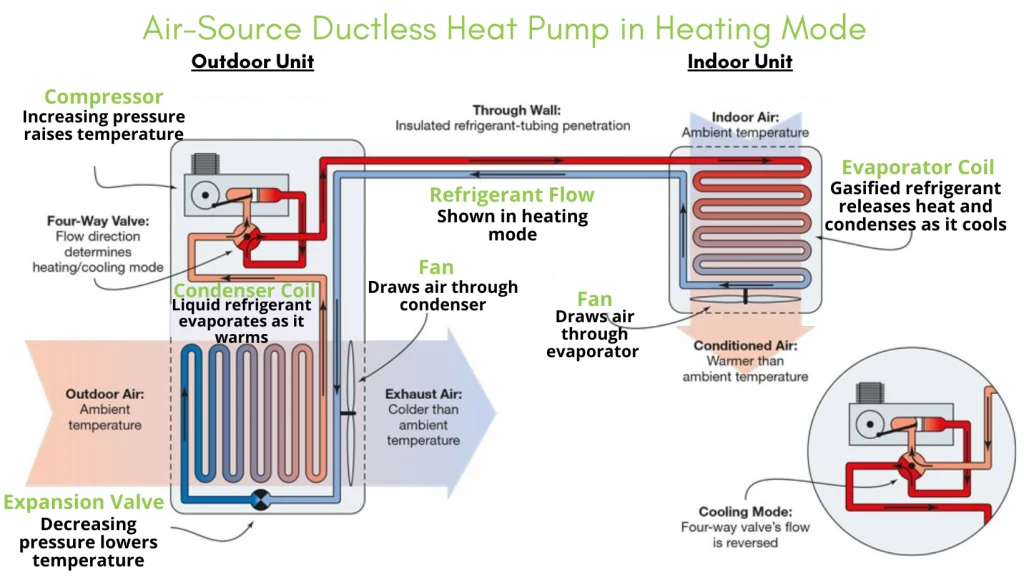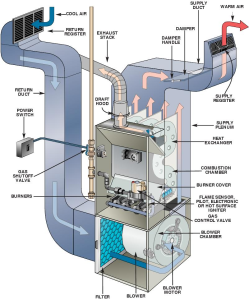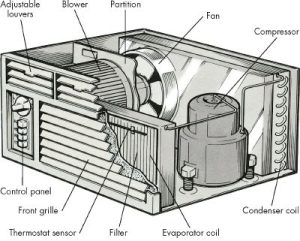“What is a heat pump?”
“What is a mini split?”
“How does a heat pump work?”
“Should I get a heat pump?”
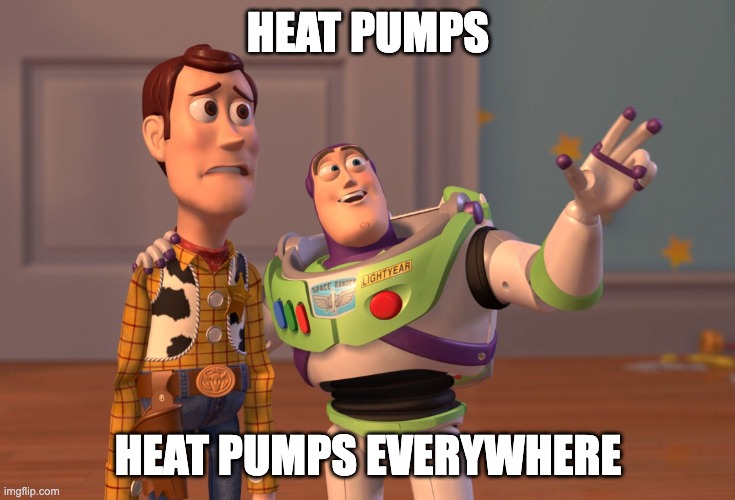
Maybe you’ve heard your friends talking about how their furnace finally died and they made the switch to a heat pump. Perhaps you’ve searched “furnace replacement” and seen the words “heat pump” and been intrigued. You might be looking for ways that can become a better steward to our planet. Or maybe you know the smallest bit about these electrified powerhouses but you don’t quite know where to start.
Don’t worry. We’ve got you covered.
Introducing the best way to take a big bite out of climate change – the heat pump!
Heat pumps are the hot new thing and will be your coolest appliance. And, did you know that the technology behind heat pumps is actually over 100 years old? That’s right – heat pump HVAC systems are in fact not brand new, but rather they have been massively improved over the past 60 years (and especially over the past 10 years).
What is a heat pump?
A classic question! We’re here to make it make sense…without hurting your brain too much.
Air source heat pump systems replace your current furnace (or boiler) and any air conditioning units in your home. They’re powered solely by electricity, which means you’re no longer burning stuff to stay warm, and you’re not using an entire second appliance just to stay cool. That’s right – these heat pumps can both heat and cool your home! But…how?
How does a heat pump work?
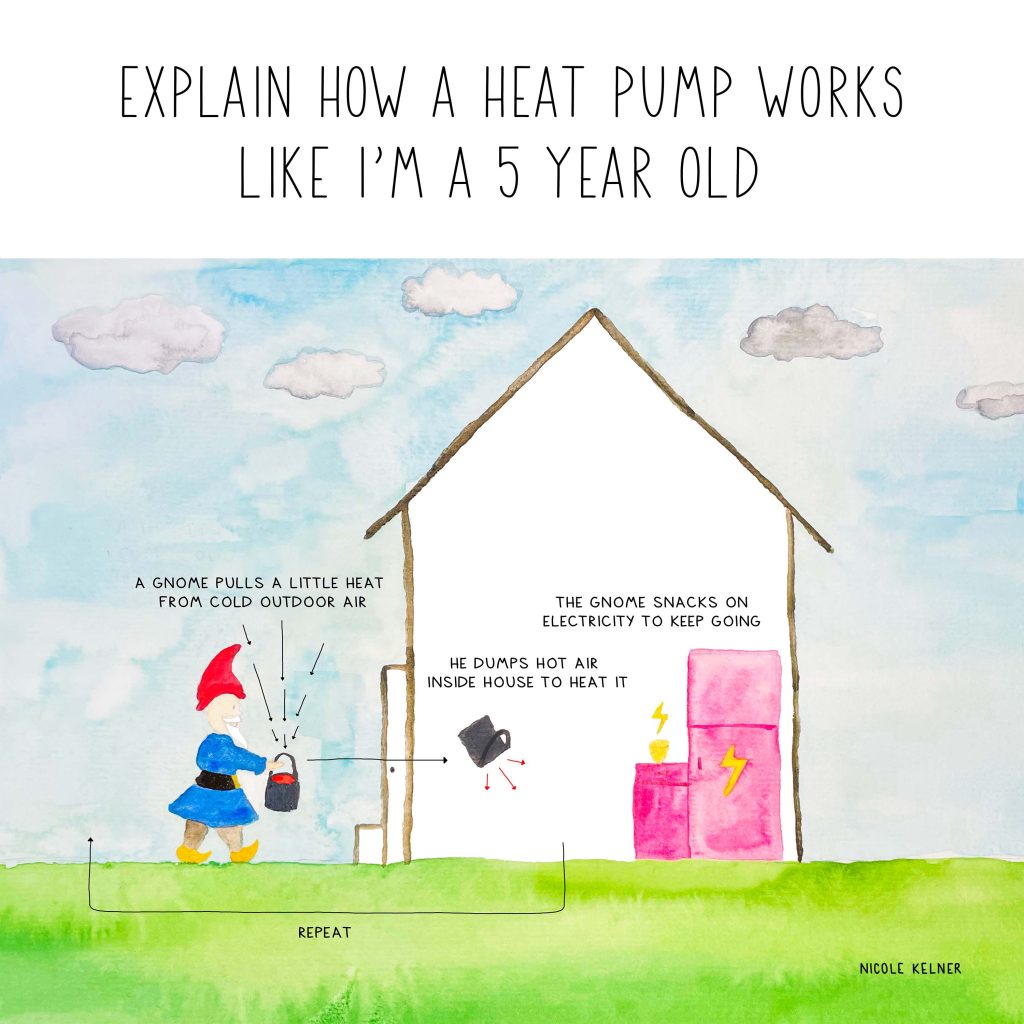
Unlike a furnace or boiler, heat pumps don’t burn fossil fuels, which make them a healthier choice for your family and the environment.
Instead, powered by electricity, air source heat pumps move heat from the air outside of a home to inside and vice versa to heat and cool. Check out the image below for a more visual explanation:
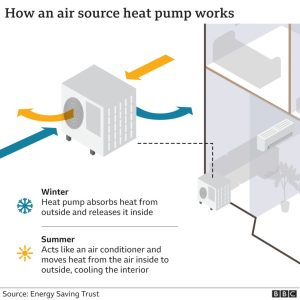
That’s right – a heat pump doesn’t generate heat, it moves existing heat. Even on the very coldest days in very cold places (like Denver and Boston) , there are heat particles in the air. The right cold climate heat pump can take these and move them inside of your home to keep it warm. And in the summer, heat particles are moved from the inside of your home to the outside. Pretty cool (and hot), huh?
What does a heat pump system look like?
There are two common types of air source heat pumps. The first is a ducted system. This works best in homes that already have ductwork and utilize central heating and cooling system, which makes for a pretty seamless transition.
However, if your current ductwork is in poor condition or your home doesn’t have ducts (think, folks with hydronic boiler systems), the right move for your home is likely a ductless mini split heat pump system. Mini splits consist of an indoor unit, usually mounted on your wall or ceiling, and an outdoor unit. They’re connected, and they provide heating and cooling to whichever rooms they’re installed in–without using any ducting. Want to learn more about mini split heat pumps specifically? Check out our ultimate guide here.
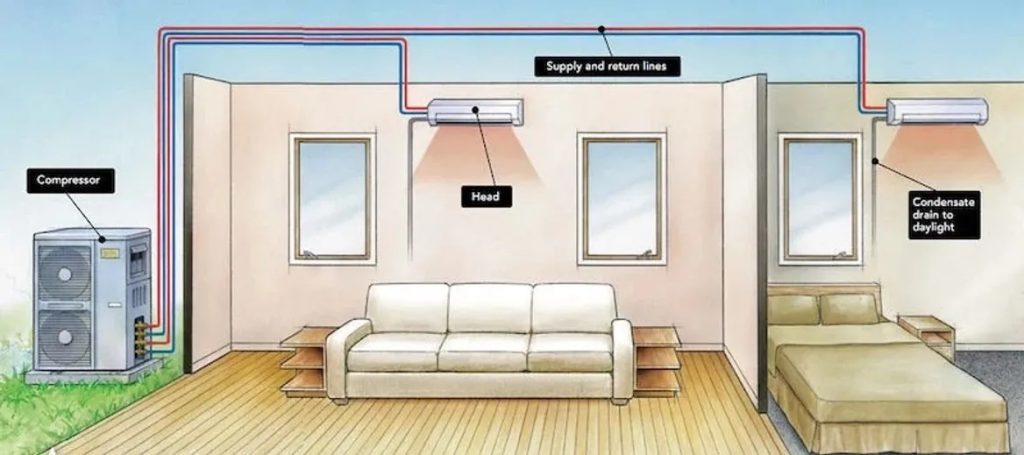
Mini split heat pumps systems as well as ducted air source heat pump systems all have easy filters to clean and upkeep, ensuring the long life of these awesome electric appliances.
A quick note on energy efficiency
Remember, part of upgrading to a climate-friendly home means you shouldn’t produce more energy than you need. For example, you wouldn’t leave your front door wide open with the AC blasting in 95 degree summer, would you? Probably not. That’s a poor use of energy and not efficient!
Efficiency for energy goes beyond weatherization– it means taking care of what we have and using it to the best of its ability within its lifetime.
The best part about your awesome, energy-efficient heat pump? It’s your electric heater and your electric air conditioning system all in one.
Hey, that’s right. It’s electric!
So, it’s electric…why should I care?
Modern electric appliances that run on heat pumps are better for the environment – in fact, they are 3X more efficient than their fossil-fueled counterparts. And don’t be mistaken, we’re not talking about your grandma’s old school electric resistance HVAC. Heat pumps are the cool, new kids on the block, and WAY more efficient than any other option available today.
Rather than burning stuff to heat your home, you can begin making the switch to reduce your carbon footprint today. A heat pump does exactly that – removes the harmful output of fossil fuels burning in your home and replaces it with the air that simply exists around your home. Plus, if you weatherize, you’re ensuring that you’re living in accordance with your parent’s favorite adage – “don’t heat or cool the whole neighborhood! Shut that door!”
Saving you dollars and solving climate change
Did you know that the average homeowner can save 7 metric tons of CO2 every year by switching to a heat pump? In comparison, you’d save about 1 metric ton of CO2 every year by going fully vegan. Slashing your carbon emissions without ever leaving the house sounds good to us!
And it’s not just reducing your emissions, it’s reducing your spending, too! Because of the high efficiency of these appliances, the average homeowner who switches from a furnace to an air source heat pump will save about $1000 or more a year on utility bills.
The icing on top is that there are incredible incentives available to help offset the cost of installing a heat pump in your home. Thanks to the Inflation Reduction Act (IRA), there are Federal incentives available to everyone in the U.S.. And, in many places, there are also state, and even local rebates available (Colorado and Massachusetts where we operate are two examples).

Heat pumps are a well-loved technology across the United States and around the world (including in cold climates)! Ready to upgrade to a climate-friendly home? Join us in building a brighter future by electrifying everything, starting with homes. Your choice today shapes our collective tomorrow!
